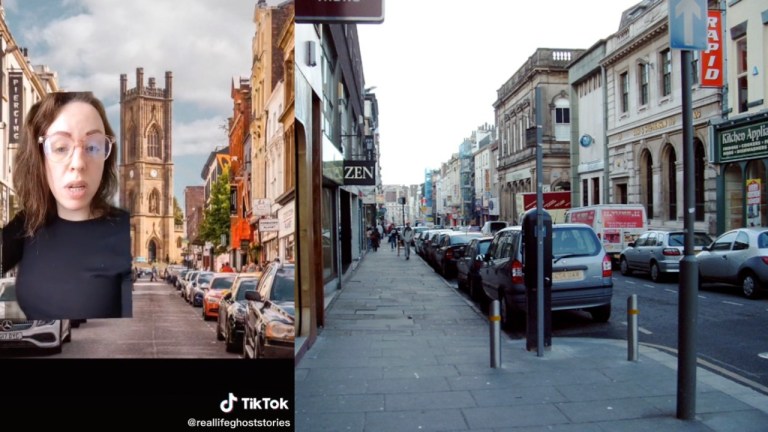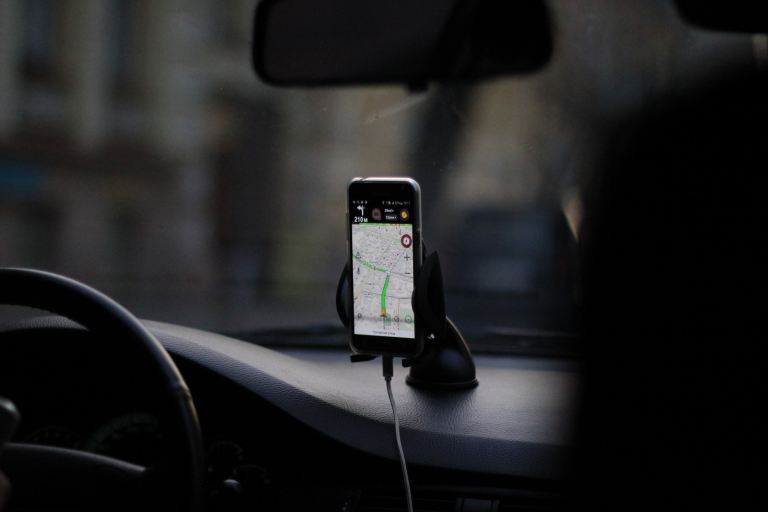Here’s Some Important Safety Hacks From Cyclists To Help You Have A Better Biking Commute
Working with some long-time commuter cyclists, I’ve collected the best advice and sweet tips to hack your bike commute. There are tips for how to practically prepare for, execute, and recover from commuting by bike.
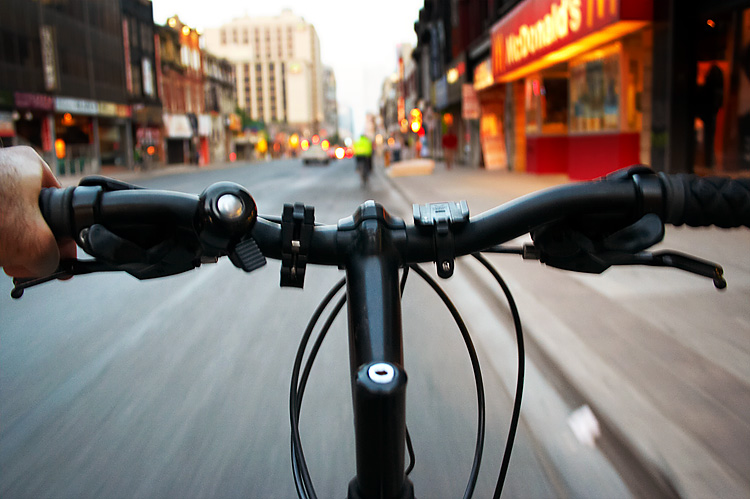
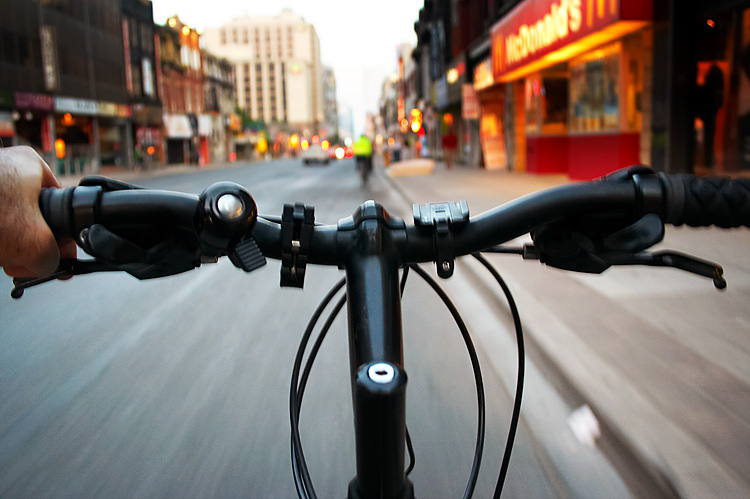
While it might feel like Alaska outside, never fear. There will come a day when the slush puddles will recede and the return of open asphalt beckons to you “…come, ride your bike today.” Maybe you’re tired of the MTA’s endless fare hikes, or maybe you live off of the L train. Can’t stand transfers, crowded platforms, or slow buses?
Working with some long-time commuter cyclists, I’ve collected the best advice and sweet tips to hack your bike commute. There are tips for how to practically prepare for, execute, and recover from commuting by bike. You’ll be comfortable riding in any conditions, and to any kind of job with some of these:
RULES OF THE ROAD
There are some really basic requirements for bicycling, and you should familiarize yourself with your legal responsibilities, and with your rights. Always understand that while bicycling is an amazing way to be healthy and active in the city, and you get to see New York from new and beautiful perspectives, you must be vigilant in protecting yourself and those around you.
- Wear a Helmet: Protect your noggin. In my worst accident I landed on my head in the middle of 1st Avenue, and my helmet is the only thing that saved me from becoming a human vegetable. Lots of cyclists have stories like this, though not all. You cannot predict an accident, so it’s better to be safe than sorry. Get helmets with ventilation, and replace them after any collision or signs of hard wear show. Be on the lookout for free helmet giveaways, which are sponsored by the DOT and often happen in the spring and summer when new ridership is highest.
- Be Visible: Wear bright colors, Use lights at night (required), and whenever possible use reflective tape so that you are more visible when you are on the road.
- Listen up Legally, you can wear one headphone when biking. Paying attention to the sounds of your commute is important in helping you know where traffic is and how it is behaving around you.
- Do Not Text This should not even have to be said, but I always see someone on their phone, or trying to be on their phone. This is super dangerous- if it’s that important, pull over. No sense risking your life.
- Lock it Up Every cyclist in NYC has heard or experienced at least one horror story of a beloved bike or bike parts stolen by thieving scum. It is the worst, and cutting corners with bike security can cost you major money in the long run (several saddles later, I should know). The best way to protect your trusty bike is to lock it up, and lock it up tight. Maximum security means making sure that your wheels, seat post, and stem cannot be removed in addition to securing your frame to a bike lock or post.
Heavy chains and u-locks are excellent, though they can be difficult to learn how to commute with. You can invest in a set of pinheads to secure most removable parts, but they can run $60 or more at bike shops. When I bought my new bike, a friend suggested that I could pour wax into the heads of each screw to deter thieves from stealing my stuff as a hack — but that is a ton of work and can mean hours of cleaning any time you want to make an adjustment.

There are quick hacks for things like securing quick release wheels that involve hose clamps, or you can check out “quick clamps”. An excellent way to prevent your seat from being stolen involves securing it to your frame using some old bike chain threaded through old inner-tube. This is a common locking method, and you can get it done on the cheap at your local bike shop.
GETTING THERE: PLANNING YOUR ROUTES
Know where you are going ahead of time, and make sure you have a basic idea of your route beforehand. Google is getting better and better with its bike directions, and I recommend using it before you leave, and keeping it handy on your phone if you get lost. You can also check out Ride The City for excellent tips on protected bike routes, common routes, and where shops and rentals are along the way should you need assistance.
I recommend trying to plan routes that are common — when bikes travel together they are all more visible and therefore safer. If you are just starting out, try to ride with a friend until you feel more comfortable and always play it safe when it comes to maneuvering in traffic.
While I never personally got bored with my route, or had the time to consider taking a more scenic one, I have been told that there is something quite pleasant in mixing up your daily routine.
GEAR AND GEAR HACKS
Gear can be a major hurdle for many cyclists because it tends to be either too expensive, or impractically sporty for folks who want to go from bike to desk with minimum effort. The right gear can really make or break a comfortable commute, but you should see what you really need before you start making big purchases. While it can be enticing to stock up on the latest or coolest bags, jackets, or lunch kits, you might find you don’t need to buy much at all!
I am a habitual over-packer. This means that I am usually prepared for most things, and often hauling around a bunch of stuff that I didn’t need on a given day or commute. Biking to work every day taught me how to really gauge what was necessary and only pack what I needed because every inch of space in your bag counts!
Commuters are a bit divided on how to dress for their daily route, and in the end it all factors down to what you are comfortable with. If you don’t feel like changing, ride in your regular clothes. Concerned about sweat? Ride in something that breathes and change when you arrive at your destination. You aren’t in a fashion competition out there on the road, and a comfortable commute means you will keep doing it. Personally I have found that I prefer riding in my work pants and a breathable tank-top (summer) or base layer (winter/fall/spring). I think strategically about dresses, and will ride in yoga pants and a top and then slip the dress on over that as soon as I arrive. I also keep a stash of blouses in my desk or carry one with me, and after I’ve cooled down, I’m ready to go.
Gear To Protect Yourself From The Elements:
- Sun: This is sort of a no-brainer, but use sunblock on days where you’ll be biking and exposed — at the very least on your face. For extra long commutes or extra harsh sun, consider formula that can handle the high activity.
- Wind: You don’t need to buy expensive bike-specific windbreakers to cut down on the breeze. In the fall and spring, light jackets that are somewhat wind-cutting or water resistant are excellent for mornings and late evening commuting. You might already have something in your closet that works, but you can also check out the store brands of local sports equipment for some surprisingly affordable pieces.
- Rain: Consider investing in double fenders for the front and back of your bike. These can range in expense from $40 a pair to $150+ for the fancy high-end kind, but having them on your bike will really improve your ability to ride. You will often find that you won’t be biking in the rain, but just after daytime showers are over. Your feet and your back will stay dry with fenders, and you can wheel over to happy hour without risking the dreaded “skunk stripe.” Wearing a hat with a visor under your helmet is also a really great way to keep rain out of your eyes.
- Heat: The best way to handle heat is to plan your commute during he coolest parts of the day in summer months or warmer climates. Morning commuting before 11, and afternoons after 3 tend to be the best times to hit the road, and if you keep hours somewhere between 9-5 you should already be in the safe zone. For freelancers, and folks who work other hours, consider heading in a little early, or hanging out a little late until things cool off. Also, Drink water!
- Cold: In cold weather, wear layers and be sure that the one closest to your body is a lightweight fabric that will allow heat and sweat to move away from your skin. There is nothing worse than getting half-way up a bridge and needing to start removing layers only to find that you are swampy and clammy underneath. This can also lead to serious chills on the way down. Be sure that you balance staying warm during the start of your ride, and being able to ventilate once you get warmed up and trust me – if you are riding more than 1.5 miles — you will.
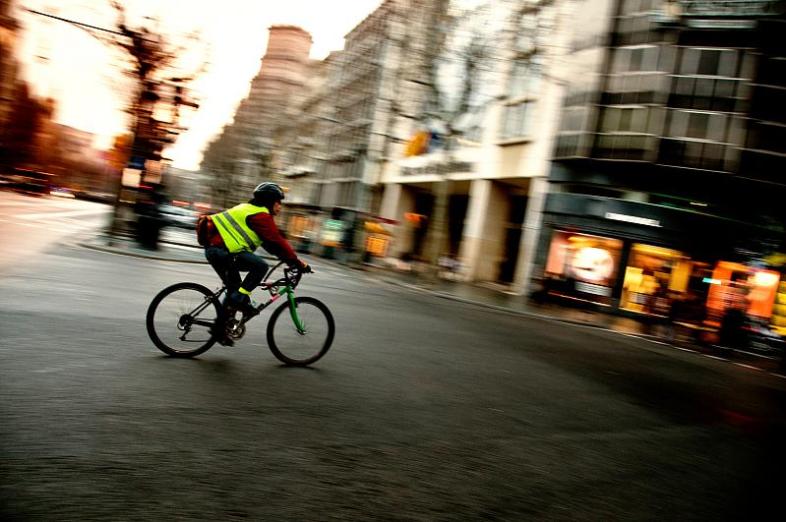
Gear For Getting Your Stuff There:
You don’t need to buy expensive bike bags for commuting! I cannot stress this enough! While I enjoy Ortlieb products as much as the next gal, I can fully admit that my super lime-green pannier is not the greatest bag for transitioning from bike to office to after work activity (walking into restaurants with it can make me feel clumsy/awkward).
Keep in mind that how you haul your gear will depend on how much you need to take with you, and how far you are going. Many cyclists recommend bags that you don’t need to carry on your back because, while convenient, you can get a sweaty back and that can be very uncomfortable! Never fear, you can still commute with your backpack, but consider getting a rear rack for your bike ($30 or so in most cases) and using bungee nets to secure it to your bike. The same bungee trick can be used with any other bag, tote, or purse you can think of, but its recommended that the bag be able to securely close so nothing gets jostled out of place!
If you decide not to commute with a change of clothes or a lunch- you may be able to commute without a bag entirely!
Gear For Packing Your Lunch:
You may have noticed that $12 salad bars and prepared foods places are super expensive. Commuting by bike, even being space conscious, doesn’t mean you need to sacrifice packing a healthy lunch!
Whatever your stance on mason jars, I cannot sing their praises for my bike commuting enough. Mason jars and the plastic deli containers that takeout food comes in are perfect for fitting your lunch into a tight space (stackable!). Carrying things in these containers has saved me from squashed fruit, and provided lots of extra room for other items in my bag.
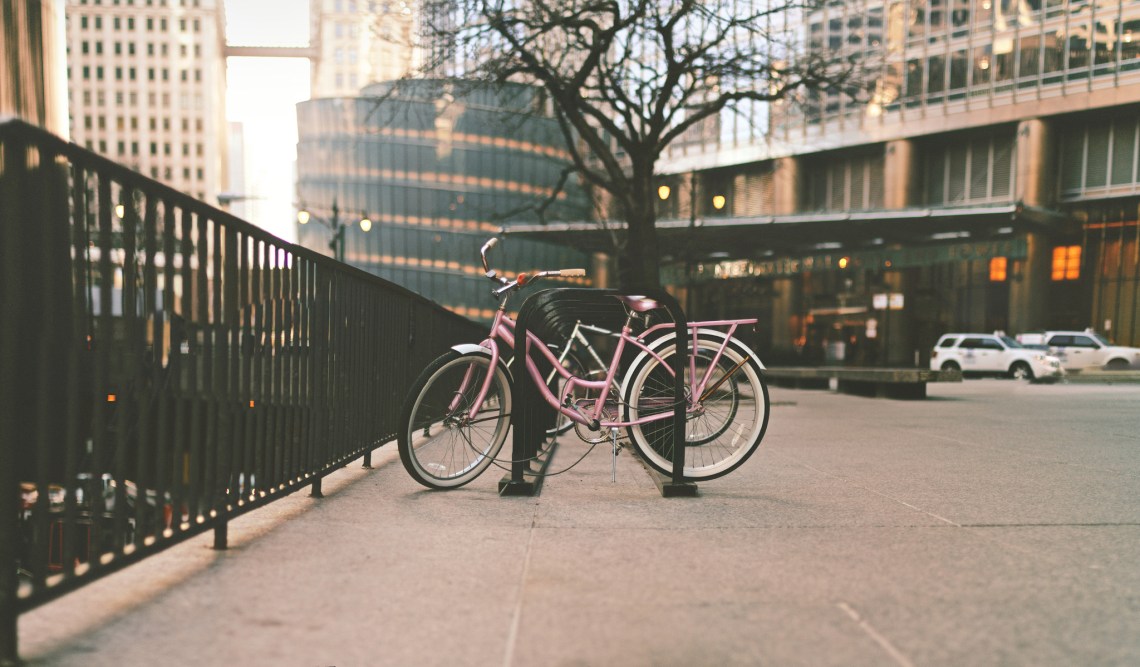
YOU MADE IT: POST CYCLING ROUTINE
You did it! You get off your bike, you lock it up safely and man, do you feel great! It may be pouring outside and you’ve got to shake the water out of your shoe, but you were not sitting on a crowded C train stuck underground for 45 minutes smelling the armpit of the guy next to you.
Now to freshen up! Most workplaces in NYC do not offer showers, or locker rooms. A lot of commuters have gotten used to what they call the “sink-bath.” Give yourself a few minutes to cool down, and then head to the bathroom of your workplace. While you can totally freshen up with just hand soap and some paper-towels, a lot of commuters recommend carrying some kind of face/body wipes, a spare deodorant if you use it, and a small hand-towel. You can always keep these things at your desk if you don’t want to carry them every day, too!
Freshen up, stow your commuting clothes if you need to (hang them to dry if you want/can), and voila! Not only are you fresh and ready to work, you’ve had your morning exercise to invigorate you!
A special thanks to all of my bike commuter friends who helped offer up the advice they have learned through trial and error. The best advice though, is to have fun and take it easy when you get started. Try some of these now or later, and figure out what best works for you based on your experience, comfort level, and commute. Then add your own tips and tricks in the comments below! ![]()
